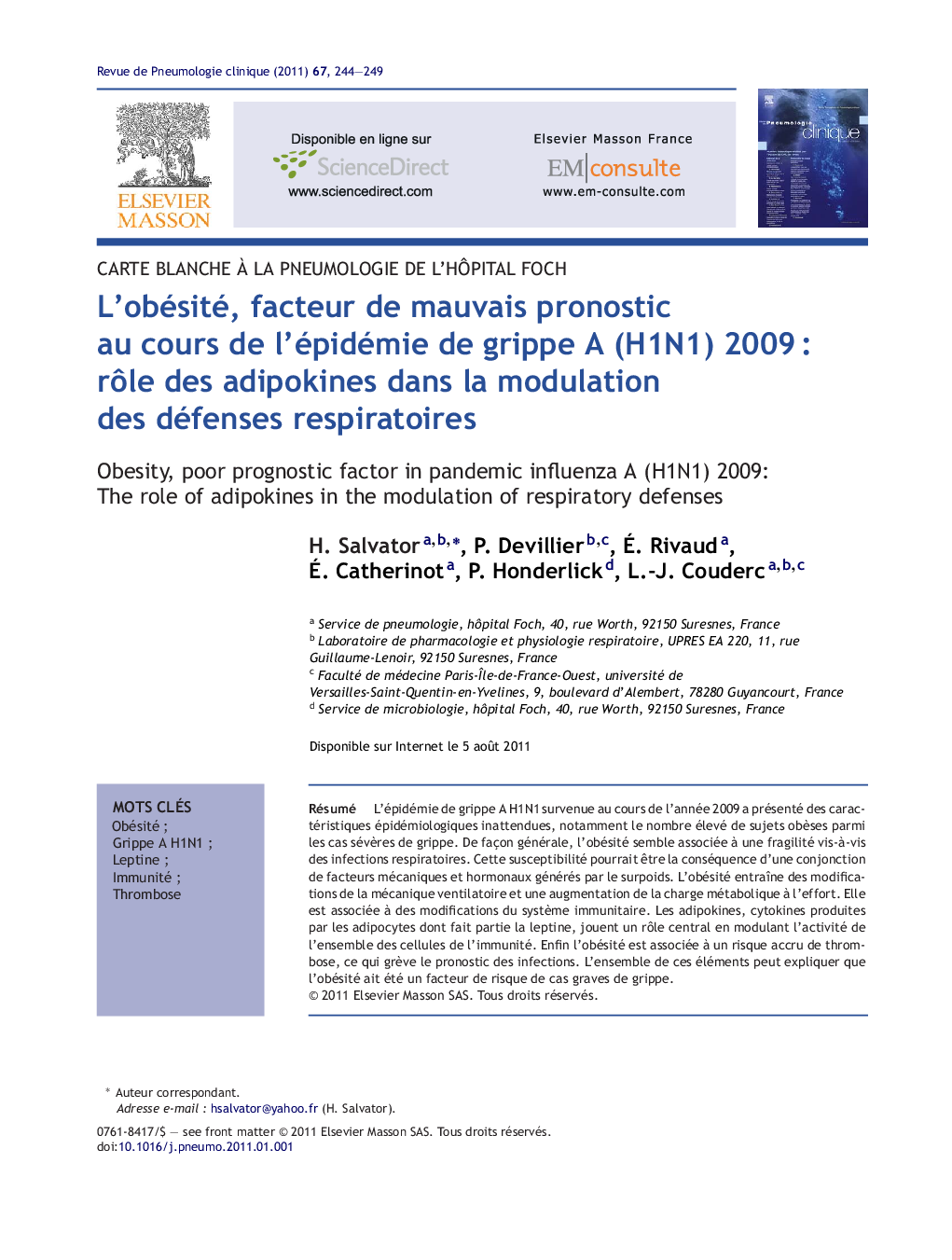| Article ID | Journal | Published Year | Pages | File Type |
|---|---|---|---|---|
| 3419531 | Revue de Pneumologie Clinique | 2011 | 6 Pages |
Abstract
Pandemic influenza A (H1N1), which occurred during 2009, revealed some unexpected epidemiologic characteristics, notably the high number of obese subjects among the severe cases of influenza. Generally, obesity seems to be associated with a weakness when it comes to respiratory infections. This susceptibility may be the result of a concurrence of mechanical and hormonal factors due to the excess weight. Obesity leads to changes in the ventilatory mechanics and an increase in the metabolic load during exercise. It is associated with immune system changes. Adipokines, cytokines produced by adipocytes, including leptin, play a central role by modulating the activity of all the cells of the immune system. Finally, obesity is associated with an increased risk of thrombosis, which has an adverse effect on the prognosis of infections. All of these observations can explain that obesity has been a risk factor in serious cases of influenza.
Related Topics
Health Sciences
Medicine and Dentistry
Infectious Diseases
Authors
H. Salvator, P. Devillier, Ã. Rivaud, Ã. Catherinot, P. Honderlick, L.-J. Couderc,
